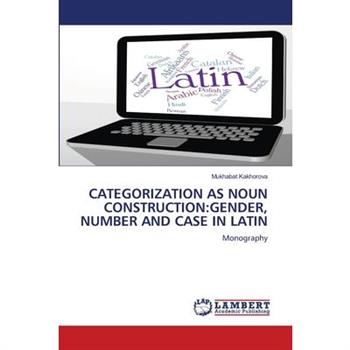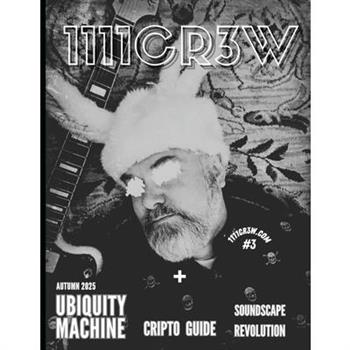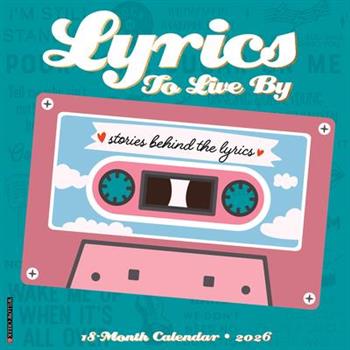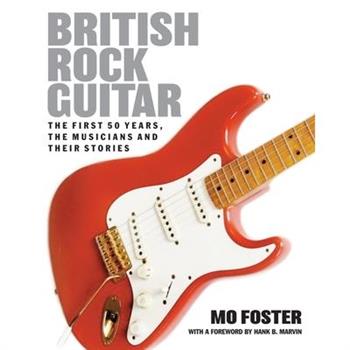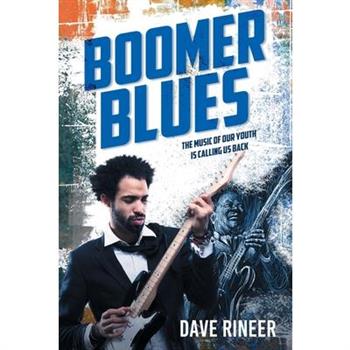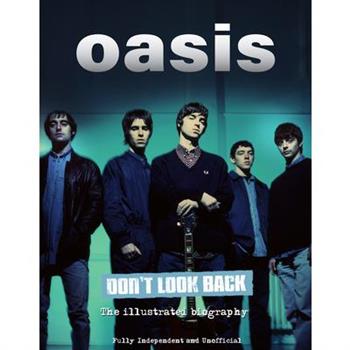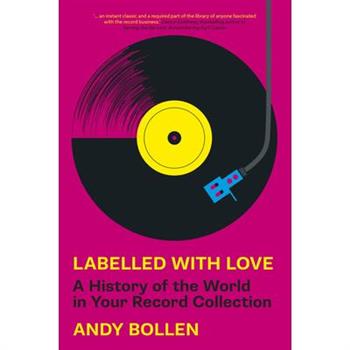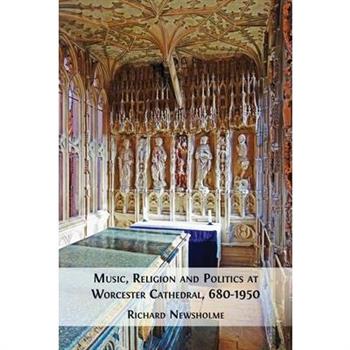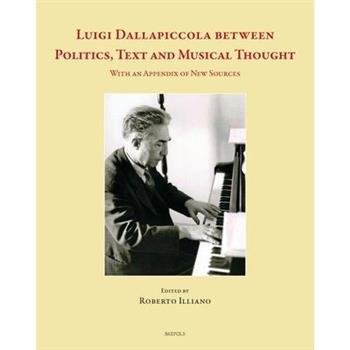Reading Texts in Music and Literature of the Long Nineteenth Century
This collection offers students a practical guide to understanding the ways music and literature intersect and the influence of each on the other, as well as developing methods of study. This is the first coursebook to help students explore the many types of relationship that exist between music and literature when studied in historical or aesthetic contexts. It fosters interdisciplinary study among students in these subject areas and helps to break down the barrier of music as seeming "impenetrable" to students outside musicology. Chapters each discuss music/text relationships via an important social, aesthetic or cultural theme that maps onto key preoccupations of the long nineteenth century. Each chapter presents a case-study text first, followed by a short summary that sets out the challenges of approach and interpretation involved. A section on background then places the featured case-study in historical or aesthetic context, leading to a detailed discussion. The book offers a learning experience combining the methodological in music/text relationships with the substantive or thematic. Contributors: Charlotte Bentley, Philip Burnett, Alisa Clapp-Itnyre, Elicia Clements, Jeremy Coleman, Sarah Collins, Katharine Ellis, Daniel M. Grimley, Elizabeth Helsinger, Fraser Riddell, Emma Sutton, Shafquat Towheed, Phyllis Weliver, Christopher Wiley
Reading Texts in Music and Literature of the Long Nineteenth Century
This collection offers students a practical guide to understanding the ways music and literature intersect and the influence of each on the other, as well as developing methods of study. This is the first coursebook to help students explore the many types of relationship that exist between music and literature when studied in historical or aesthetic contexts. It fosters interdisciplinary study among students in these subject areas and helps to break down the barrier of music as seeming "impenetrable" to students outside musicology. Chapters each discuss music/text relationships via an important social, aesthetic or cultural theme that maps onto key preoccupations of the long nineteenth century. Each chapter presents a case-study text first, followed by a short summary that sets out the challenges of approach and interpretation involved. A section on background then places the featured case-study in historical or aesthetic context, leading to a detailed discussion. The book offers a learning experience combining the methodological in music/text relationships with the substantive or thematic. Contributors: Charlotte Bentley, Philip Burnett, Alisa Clapp-Itnyre, Elicia Clements, Jeremy Coleman, Sarah Collins, Katharine Ellis, Daniel M. Grimley, Elizabeth Helsinger, Fraser Riddell, Emma Sutton, Shafquat Towheed, Phyllis Weliver, Christopher Wiley
The Orchestra of the Cappella Reale, Naples, 1750-1800
The most prestigious musical ensemble of early-modern Naples remained the Royal Chapel or Cappella Reale di Palazzo. Conceived to serve directly the ruling authority of the capital city - whether the viceroy (Spanish or Austrian) or monarchs (Carlo di Borbone then Ferdinando) - membership in this elite organization offered prestige, financial security, and access to the broader networks of music culture in Naples, attracting the best musicians within and beyond the physical confines of the capital. This Element introduces readers to the largely unknown history of the Neapolitan Cappella Reale in the second half of the eighteenth century. It is based on primary sources, reconstructing the entire personnel of the ensemble (1750-99), recovering previously unstudied contractual agreements, offering details about the musicians while also examining the original music of the principal musicians of the orchestra.
The Orchestra of the Cappella Reale, Naples, 1750-1800
The most prestigious musical ensemble of early-modern Naples remained the Royal Chapel or Cappella Reale di Palazzo. Conceived to serve directly the ruling authority of the capital city - whether the viceroy (Spanish or Austrian) or monarchs (Carlo di Borbone then Ferdinando) - membership in this elite organization offered prestige, financial security, and access to the broader networks of music culture in Naples, attracting the best musicians within and beyond the physical confines of the capital. This Element introduces readers to the largely unknown history of the Neapolitan Cappella Reale in the second half of the eighteenth century. It is based on primary sources, reconstructing the entire personnel of the ensemble (1750-99), recovering previously unstudied contractual agreements, offering details about the musicians while also examining the original music of the principal musicians of the orchestra.
Categorization as Noun Construction
Lyrics to Live by 12 X 12 Wall Calendar
SONG-INSPIRED STYLE - Let your favorite lyrics uplift and inspire you all year long with this bold and colorful calendar celebrating iconic lines from classic and modern hits. Each month features hand-lettered designs that bring the rhythm, emotion, and artistry of music into your everyday space.
Artificial Intelligence in Music and Audio Production
In a time when artificial intelligence (AI) is becoming increasingly integrated into music production, Artificial Intelligence in Music and Audio Production provides a comprehensive and easy-to-understand overview of the latest developments. Artificial Intelligence in Music and Audio Production begins by explaining how AI is already being used in various areas of music production today, from composition and sound design to mixing, mastering, and creating music videos. Practical guides and examples show how anyone can benefit from these new technologies. Whether it's about generating synthetic vocals, transforming your own voice, or creating complete songs using text prompts - the possibilities are almost limitless. Artificial Intelligence in Music and Audio Production demonstrates to musicians and producers how AI can allow musicians and producers to realize their ideas faster and in more comprehensive ways, ultimately enriching their creative process.This book will be of interest to singers, DJs, music producers, and anyone interested in the future of music - even without a deep technical background.
British Rock Guitar
The guitar has become the most emotive musical instrument of the last 50 years of rock and roll. From the early days when wannabee stars fashioned homemade guitars out of old tea chests, to today's sophisticated instruments the impact has been phenomenal.Drawing on his own recollections and those of some of the greatest exponents of the rock guitar, from Hank Marvin to Eric Clapton and Brian May, Mo Foster has written the definitive history of the importance of the guitar in the development of British music over the last 50 years. A renowned bass player, Mo Foster has played with the greats and with their backing and memories has written an insightful, yet passionate and very humorous book. Illustrated by period advertisements, memorabilia, and previously unseen photographs, many from the artist's private collections.
Berlioz the Critic
Hector Berlioz combined writing music with lively and informed music criticism. This collection of articles, engagingly translated by Roger Nichols, covers the middle years of his critical career. Berlioz's music criticism from 1837 to 1850 covers a period druing which he composed some of his finest works, and travelled abroad to perform them before appreciative audiences in Germany, Russia, and England. Roger Nichols has chosen and translated extracts from fifty-eight articles of particular interest, with commentary and notes identifying people mentioned. Berlioz scholars Peter Bloom and Julian Rushton provide an informative introduction and a comprehensive editorial apparatus. In the selected articles Berlioz discusses Paris performances of early and modern music, including new operas and revivals, and concerts at the Paris Conservatoire. He comments freely but with understanding on conductors, singers and instrumentalists. The essays demonstrate the composer's concern with innovation in the design of musical instruments and assess the quality of performing venues. Berlioz writes on the musical life of London, France, and Germany, most entertainingly about the inauguration of statues of Beethoven and Rossini. The selection is framed by major articles on "Imitation in Music" and on Gluck's opera Alceste.
Voicing Responsible AI Pedagogy for Music and Visual Arts Education
This book critically examines the integration of generative artificial intelligence (Gen AI) in music education, exploring its transformative potential and associated risks. It underscores the necessity for innovative AI pedagogies across music and the arts, offering educators, researchers, and policymakers valuable insights for incorporating Gen AI into teaching while mitigating its hazards. By adopting a balanced critical perspective, the book aims to promote a dynamic, inclusive, and responsible educational approach that is responsive to the rapid advancements in adaptive technology. The book's argumentation is grounded in synthesizing Deweyan pragmatist and Baradian posthumanist philosophical perspectives. These perspectives collectively provide a framework for addressing the deployment of Gen AI in music education within a broader ethical context of global sustainability. The book is also informed by the author's many years as a scholar of music education.
Simply, Patiently, Quietly: An Approach to Creating Intentional Music
(String Letter Publishing). Simply, Patiently, Quietly combines a songbook of original notated lullabies for solo guitar and choir with insightful prose on the exploration of intentional creativity and beautiful pen and ink artwork by Christina Rauh Fishburne. With a focus on appreciating the nuanced and the small over the fleeting and the distracting, this brief multidisciplinary offering is meant to engage readers wherever they may be. "An inspired and multi-faceted read on how to channel and access creativity of all sorts, and a great reminder to quiet the daily noise and get back to what matters."--Mary Halvorson, MacArthur Fellow and Guitarist/Composer
Radio Birdman
The first-ever in-depth biography of iconoclastic Sydney punk band Radio Birdman. Sydney's legendary Radio Birdman were a stake through the satin and scarfed hearts of the early seventies' music scene, revolutionising the conservative Australian industry in the process. Regarded as one of the earliest punk bands of the seventies - before the world had heard of the Sex Pistols or The Saints - Radio Birdman were feared and loathed by many, but adored by fiercely loyal fans. Tales of Radio Birdman will be handed down through generations. Singer Rob Younger drinking from a human skull filled with sheep brains; fans unknowingly breaking limbs while dancing wildly at gigs; fighting venue bouncers with microphone stands, and having publicans cut the power in a desperate bid to halt their force-of-nature-like performances. Their riotous appearance at Paddington Town Hall in December 1977 drew an overflowing crowd of thousands, eclipsing the audience for AC/DC's triumphant return to Sydney after the Youngs had conquered Europe a year earlier. While Birdman split after a disastrous UK and European tour in 1978, hunger for a reunion grew by the day, and their eventual regrouping was met with wild acclaim. In a series of electrifying shows at the 1996 Big Day Out, they overshadowed the likes of Nick Cave and the Bad Seeds, Rage Against the Machine and The Prodigy. Birdman continued to play sell-out gigs to devoted crowds both in Australia and across the globe. In 2007, the group were inducted into the ARIA Australian Music Hall of Fame. With 2024 marking their half century of existence, Radio Birdman are internationally worshipped, their mysterious logo - once a sign of a secret society around a little-known rock group from Sydney - now proudly emblazoned on skin all over the planet. The Radio Birdman story is one of inspiration, confrontation and commitment, as well as the creation of a subculture that continues to this day. However, their story has never been told - in depth - until now. Engleheart's Radio Birdman: Retaliate First is drawn from more than 130 interviews with the band members, their closest associates and fans.
Room 100
Room 100 chronicles the tragic story of Sid Vicious and Nancy Spungen, punk rock's very own Romeo and Juliet. Through a wealth of archival material, plus new and exclusive interviews from rock luminaries such as Television guitarist Richard Lloyd, iconic photographer Robert Bayley, and PUNK magazine co-creator John Holmstrom, critically acclaimed true-crime writer Jesse P. Pollack's book is the first to be solely devoted to popular music's darkest hour--the murder of Nancy Spungen. Did Sid kill the love of his life in a drug-induced stupor, or had Nancybe en the victim of a robbery gone wrong? Was there a death pact? Did the police ignore crucial evidence? This comprehensive journalistic account will be the definitive book on one of rock 'n roll's most intriguing and enduring mysteries.
Margaret Watts Hughes: Sound May Be Seen
Ethereal and enigmatic glass slides preserve the resonance of Hughes' voice in rippling, organic compositions The acclaimed Welsh singer and philanthropist Margaret Watts Hughes (1842-1907) was one of many inventors of her day fascinated by the visual documentation of sound. Her "eidophone" comprised a tube attached to a chamber covered in rubber, or "diaphragm." Hughes covered a glass slide with grains of sand or coarse pigment, then saturated it with water or milk. By singing into the device, the vibrations of her voice would etch out patterns onto the disc: an artistic rendering of the scientific principle of standing-wave resonance. Her "Voice Figures," as she called them, ranged from primitive patterns to designs resembling flowers, seashells and other natural phenomena. While Hughes valued her discovery for both its scientific and spiritual implications, leaders of the Theosophical movement saw her work as a means of making visible the invisible world.Sound May Be Seen presents selections from Hughes' original 1891 publication of the "Voice Figures" and a rare surviving set of her glass slides, alongside contemporary reactions to her captivating and ultimately enigmatic work.
Studio Ghibli - Recital Repertoire Book 2
(Piano). A collection of popular Studio Ghibli tunes that can be enjoyed by children and adults alike. Includes 14 well-thought-out arrangements for the intermediate level, perfect for lessons and recitals! Includes selections from Castle in the Sky, Porco Rosso, Princess Mononoke, Spirited Away and more.
Studio Ghibli - Recital Repertoire Book 2
(Piano). A collection of popular Studio Ghibli tunes that can be enjoyed by children and adults alike. Includes 18 well-thought-out arrangements for the elementary level, perfect for lessons and recitals! Includes selections from Castle in the Sky, Kiki's Delivery Service, My Neighbor Totoro, Princess Mononoke, Porco Rosso, Spirited Away and more.
Studio Ghibli - Recital Repertoire Book 1
(Piano). A collection of popular Studio Ghibli tunes that can be enjoyed by children and adults alike. Includes 19 well-thought-out arrangements for the elementary level, perfect for lessons and recitals! Includes selections from Castle in the Sky, Kiki's Delivery Service, My Neighbor Totoro, Princess Mononoke, Spirited Away and more.
Labelled with Love
A warm-hearted, reflective, musical odyssey through the record labels, bands and music which shaped our lives. 'An instant classic and a required part of the library of anyone fascinated with the record business.' - Danny Goldberg, bestselling author of Serving the Servant: Remembering Kurt CobainChess Records tested their acquisitions out on people waiting at a nearby bus stop: if the crowd were bopping, they had a hit.Sub Pop rejection letters start with the harsh, yet funny, 'Dear Loser'.Atlantic Records signed Led Zeppelin on Dusty Springfield's recommendation.Labelled with Love is an odyssey through your record collection and the world beyond it, from the Jazz Age to punk, the civil rights movement to Thatcherism, the Beatles to Britpop, and Ella Fitzgerald to The Ramones. Long-time music obsessive Andy Bollen tracks popular music through the influential labels that have shaped the last eighty years, chronicling each company with the passion of a fan but the eye of a satirist. This is an informative and revealing look at the leading labels, bands and music that rocked our worlds and shaped our lives.
Building a Voice
On the emergence, embodiment, and mediation of voice as skin. How do we build or make a voice together? Can we imagine the voices we make in the form of a skin, a multi-sensory interface that behaves both as a boundary and as a point of connection? What does such a voice capacitate in times of crises and uncertainties? In Building a Voice: Sound, Surface, Skin, Zeynep Bulut explores these questions. She examines the multi-sensory and collective forms of voice making in experimental music, sound and media art in conversation with the use of voice in creative interventions for environmental crisis, experiences of voice hearing, and digital technologies of artificial and tactile speech. Through this conversation, she points to two key terms: plasticity of voice, and non-dialogue. Plasticity of voice indicates both malleable and resistant aspects of voice. Non-dialogue refers to cross-sensory, non-dyadic, and distributed modes of interaction across both humans and nonhumans. The plasticity of voice and the non-dialogue, Bulut argues, encourage us to think about voice in the form of a skin, a surface that both connects and differentiates, without being limited to human body or labels of verbal language. Voice-as-skin, in effect, prompts us to reflect on both individual and collective, concrete and emergent, and uncertain and shared aspects of voice and speech, as well as to pace and revisit our conceptions of communication, intersubjectivity, connectivity, understanding and empathy.
Bach: The Cello Suites
Originally dismissed as curiosities, J. S. Bach's Cello Suites are now understood as the pinnacle of composition for unaccompanied cello. This handbook examines how and why Bach composed these highly innovative works. It explains the characteristics of each of the dance types used in the suites and reveals the compositional methods that achieve cohesion within each suite. The author discusses the four manuscript copies of Bach's lost original and the valuable evidence they contain on how the Suites might be performed. He explores how, after around 1860, the Cello Suites gradually entered the concert hall, where they initially received a mixed critical and audience reception. The Catalan cellist Pablo Casals extensively popularized them through his concerts and recordings, setting the paradigm for several generations to follow. The Cello Suites now have a global resonance, influencing music from Benjamin Britten's Cello Suites to J-pop, and media from K-drama to Ingmar Bergman's films.
Luigi Dallapiccola Between Politics, Text and Musical Thought
Luigi Dallapiccola represents one of the most important Italian composers of the twentieth century. Born in Pazin, on the border between three frontiers, he experienced a certain multiculturalism from a young age that led him to take an interest in the new musical languages that were flourishing. Approaching the music of Schoenberg, from the 1930s he began his natural inclination toward twelve-tone music, which he developed fully after the 1950s. After 1950, the composer sought to bring his work into a principle of structural unity and stylistic uniformity, directing himself "toward patient clarification, toward sensibility, not theory". This volume offers essays on Dallapiccola's mature works, from the 1940s through to the 1970s, including the so-called 'protest music' works (Canti di prigionia, Prigioniero and Canti di liberazione), with analyses related to text, timbre and compositional process. In addition, the volume is enriched by an important section of musical and documentary sources, reproducing letters from and to Dallapiccola, as well as musical autographs, sketches, and quotations from works such as "Sex Carmina Alcaei", "Il prigioniero", "Canti di liberazione", and "Ulisse".
Bach: The Cello Suites
Originally dismissed as curiosities, J. S. Bach's Cello Suites are now understood as the pinnacle of composition for unaccompanied cello. This handbook examines how and why Bach composed these highly innovative works. It explains the characteristics of each of the dance types used in the suites and reveals the compositional methods that achieve cohesion within each suite. The author discusses the four manuscript copies of Bach's lost original and the valuable evidence they contain on how the Suites might be performed. He explores how, after around 1860, the Cello Suites gradually entered the concert hall, where they initially received a mixed critical and audience reception. The Catalan cellist Pablo Casals extensively popularized them through his concerts and recordings, setting the paradigm for several generations to follow. The Cello Suites now have a global resonance, influencing music from Benjamin Britten's Cello Suites to J-pop, and media from K-drama to Ingmar Bergman's films.











